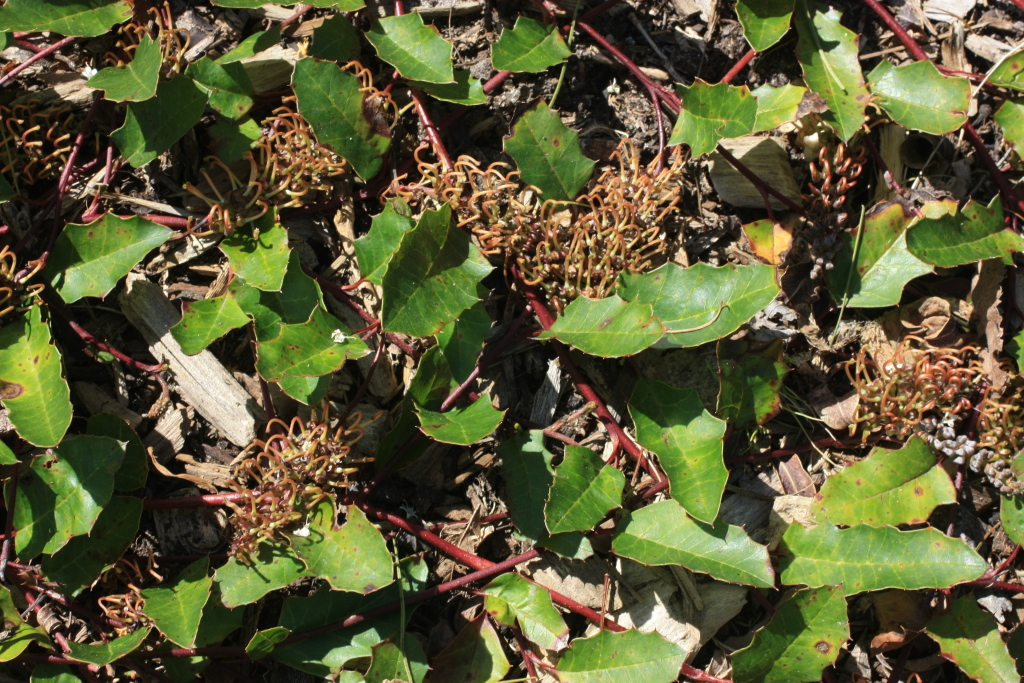Grevillea repens
F.Muell. ex Meisn. Creeping GrevilleaProstrate trailing or mat-forming shrub to c. 3 m across. Branchlet indumentum sparse sericeous. Leaves oblong to ovate or elliptic, 1.5–11.5 cm long, 1–4 cm wide, coarsely spinose-dentate with 7–19(–25) spinose teeth or short triangular lobes, sometimes with sparing secondary toothing; lower surface with an open-appressed indumentum of wavy hairs, or almost glabrous; margin shortly recurved. Conflorescences terminal (often on short axillary branchlets), erect to decurved, simple, secund, 3.5–8 cm long, rachis indumentum open-appressed; perianth light green or grey with reddish striations, subsericeous outside, glabrous inside; pistil 16–19 mm long, ovary stipitate, subsericeous to subvillous, style deep red, rarely dull orange to yellow, glabrous, pollen presenter oblique. Fruits with an open-appressed indumentum, dorsally red-striped. Flowers Oct.–Feb.
VVP, VRiv, GipP, Gold, CVU, HSF, HNF. Endemic in Victoria. Rather rare, with disjunct occurrences in mountains north-east and north-west of Melbourne: i.e. between Mt Disappointment and Healesville (Mt Slide form), and near Daylesford. Grows in moist to well-drained situations in shallow clayey soils in dry sclerophyll forest.
The Mt Slide form has a tendency to have leaves with truncate bases, floral bracts less than 1 mm wide and more persistent, a mixture of glandular and non-glandular hairs on pedicels and perianth, and styles consistently red; it prefers drier sites. The Daylesford form tends to have cuneate leaf-bases, bracts often up to 2 mm wide and deciduous in bud stage, flowers lacking glandular hairs, and styles ranging from red to orange or pink; it tolerates moister sites.
Makinson, R.O. (1996). Grevillea. In: Walsh, N.G.; Entwisle, T.J., Flora of Victoria Vol. 3, Dicotyledons Winteraceae to Myrtaceae, pp. 845–870. Inkata Press, Melbourne.
 Spinning
Spinning
